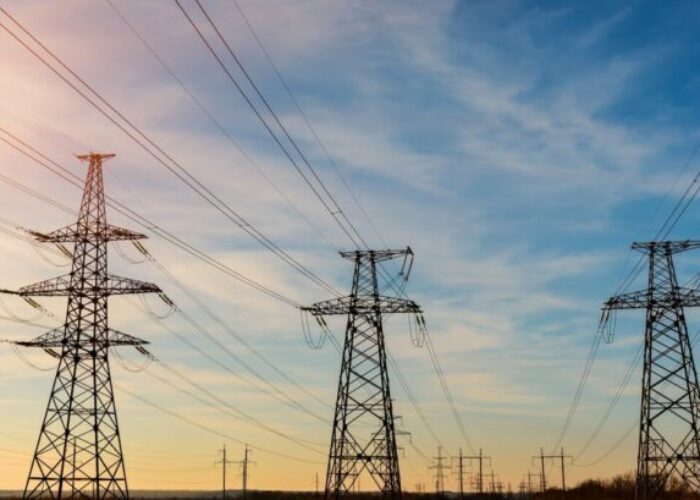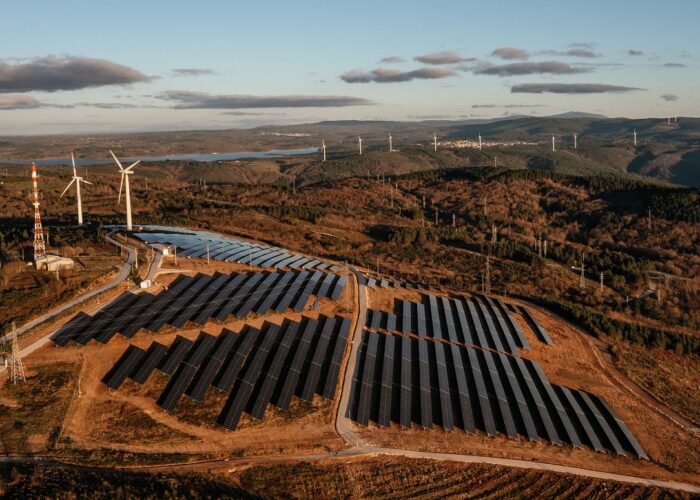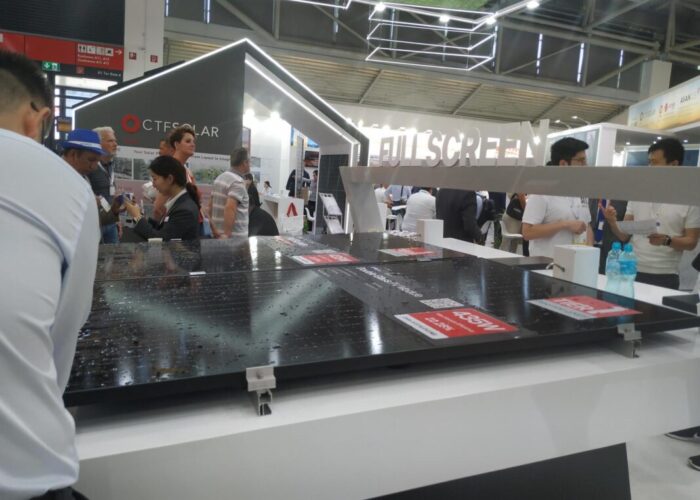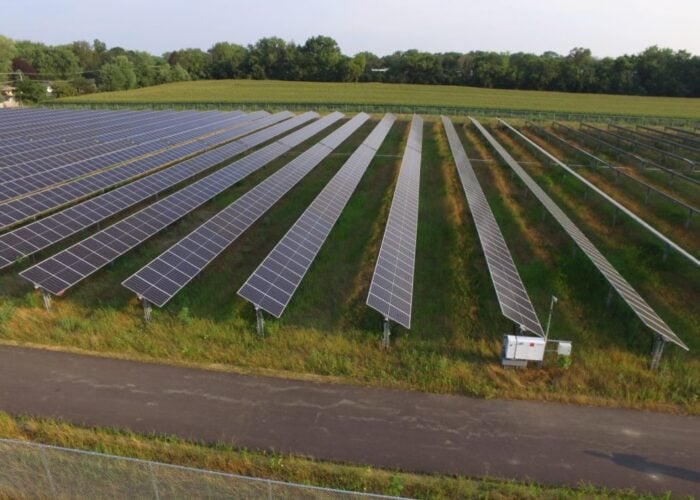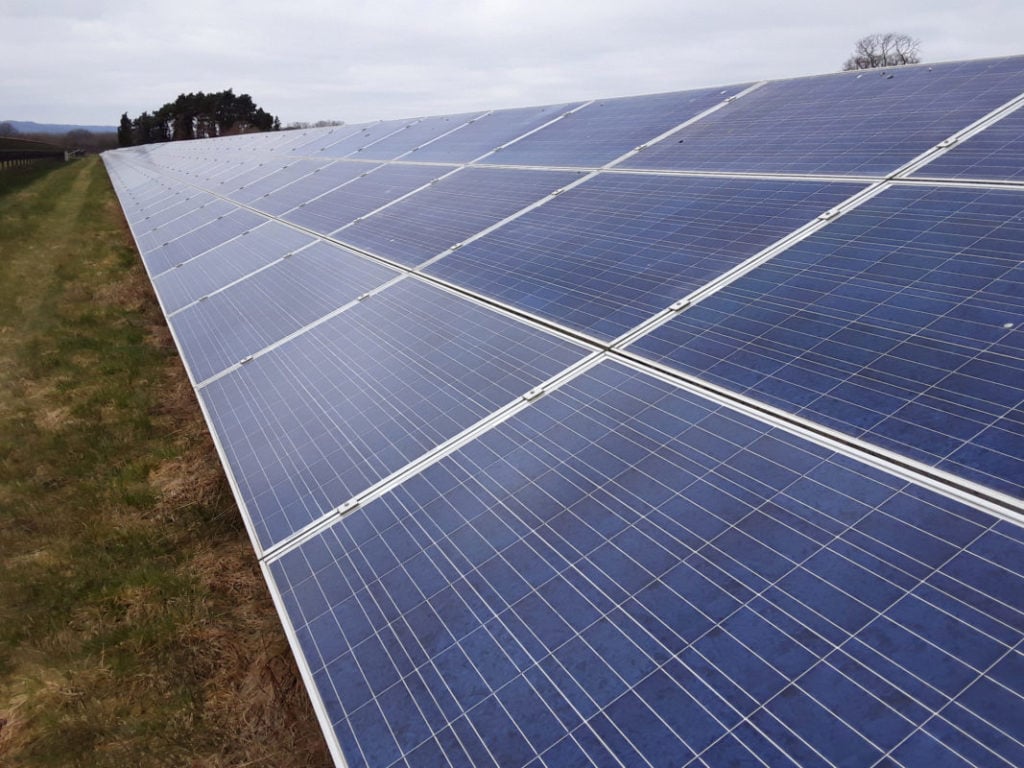
The latest round of the UK’s renewable energy support scheme saw solar scoop almost 2GW of new capacity. Gareth Simkins examines the winning projects and looks ahead to assess how solar is likely to fare in future rounds.
A total of 56 ground-mounted solar projects won backing in the latest round of the UK’s Contracts
for Difference (CfDs) renewable energy support scheme in November.
Unlock unlimited access for 12 whole months of distinctive global analysis
Photovoltaics International is now included.
- Regular insight and analysis of the industry’s biggest developments
- In-depth interviews with the industry’s leading figures
- Unlimited digital access to the PV Tech Power journal catalogue
- Unlimited digital access to the Photovoltaics International journal catalogue
- Access to more than 1,000 technical papers
- Discounts on Solar Media’s portfolio of events, in-person and virtual
Or continue reading this article for free
According to government figures released on 8 September, the total capacity of allocation round 5 (AR5) comes to 1,928MW. Considering that Solar Media estimates that national capacity, on the ground and on the roof, will hit 17.6GW by the end of the year, the figure represents a significant inroad into reaching the government target of 70GW by 2035.
Doing so implies deploying around 4GW of capacity each year, both on roofs and on the ground, so deployment will have to accelerate further. But this is precisely what the Department for Energy Security and Net Zero (DESNZ) is seeking: AR5 was the first round to be run annually, rather than every two years. It also comes ahead of the roadmap due to be published in February by the government-industry Solar Taskforce, which will set out how the sector expects to meet the goal and overcome barriers such as grid access and the availability of skilled workers.
Of 56 winners, 13 (with a capacity of 394MW) are contracted to come online in 2025/26, 4 (151MW) in 2026/27 and 39 (1,383MW) the following financial year. The total is lower than AR4, which had 66 winning projects, coming to just over 2.2GW.
The agreed strike price was £47/MWh, the same as the maximum bid price set by the government.
As strike prices are expressed in 2012 prices, adjusted according to the Consumer Price Index, the actual value of the price is 37.4% higher, coming to about £64.60/MWh in today’s money. Although the increment is substantial, the cost is still far less than it was when the CfD regime kicked off in 2015, when £79.23/MWh was agreed for three projects to be commissioned in 2015/16 (equivalent to about £108.88/MWh now).
It is also worth stressing that £64.60/ MWh is considerably less than what these projects would receive if they were run on a merchant basis, assuming current wholesale electricity prices persist. The upshot is that the 56 sites are expected to return significant sums of money to the Treasury, in return for financial security and thereby the confidence to invest.
The published capacities of the winning solar projects range from only 7MW to 57MW. But on inspection, there appears to be some ambiguity about what these figures represent.
On the face of it, the largest project – an unnamed one from Enso Green Holdings – looks like the only nationally significant infrastructure project (NSIP) on the list, being above the 50MW threshold for consideration by the government, rather than local authorities. Its nearest competitors in size are all 50MW, or just below.
But the NSIPs in the pipeline are well known – and nothing matches this project. Furthermore, the extra costs of building such installations mean that building one so close to the capacity threshold would make little sense.
So 57MW clearly refers to the project’s planned DC generation capacity, which would push capacity below the 50MW threshold, after accounting for inverter losses. This is despite guidance from the Energy System Operator and the Low Carbon Contracts Company (which runs the CfD system) saying that installed capacity should be expressed as AC. The National Policy Statement for Renewable Energy Infrastructure (otherwise known as EN-3) also makes it clear that capacity should be measured on an AC basis.
So, this leaves the question of how big the other projects are supposed to be and therefore how much capacity will be delivered by the round. Are the figures AC, DC, or a mix thereof? A DESNZ spokesperson simply said that some checks are needed.
So why are there no NSIPs among the winners of AR5? Although many are being developed, the answer is that plans for them have not yet reached the stage where CfDs may be sought. Only one has been approved recently, namely EDF Renewables’ Longfield project in Essex, while larger ones, such as the Sunnica, Botley West, One Earth and Great North Road projects, all around 800MW, remain in the pipeline.
It is also possible that these will not be supported with CfDs at all, or only partially, as the regime is far from the only route to market for utility-scale ground-mounted solar. Some developers, backed with finance seeking higher returns, at accordingly higher risk, may prefer to sell on a merchant basis. Power purchase agreements are also an option.
At first glance, it looks like JBM Solar, bought by RWE in the spring, secured the greatest number of CfDs, with six projects with titles such as ‘JBM SOLAR PROJECTS 6 LTD’ in the spreadsheet provided by DESNZ. However, the information is again somewhat deceptive.
It turns out that Low Carbon has ten, totalling 340MW, the first of which are due to commence construction in 2024.
The largest of its AR5 projects is Jafa Solar Farm in Norfolk, which is listed as 49MW in the CfD list, or 49.9MW according to its website. The plans include a battery energy storage facility, a £100,000 community benefit fund, providing £100,000 in business rates each year, and providing an educational programme for local schools, while saving an estimated 11,000 tonnes of CO2 annually and delivering a biodiversity net gain of 87%. This would be through creating a wildflower meadow, enhancing hedgerows, planting new native trees and erecting nest boxes.
Inflation, offshore wind and AR6
The relative success of solar in AR5 cannot be discussed without mentioning the elephant in the room: offshore wind power. Unlike every round before it, no CfDs were awarded for the sector this time, even though up to 5GW was made available. Last year, 7GW was secured, scheduled to come online in 2026/27.
The reason boils down to the mismanagement of the auction process. The maximum bid price for the sector was set at £44 per megawatt-hour (again in 2012 prices), too low to attract a single bid – and £2 lower than AR4. While this may have appeared reasonable based on the historically falling costs of renewables, it failed to accommodate current reality: inflation in the cost of steel and other commodities, the greater cost of financing projects due to raised interest rates, wage inflation and the broader impacts of Russia’s invasion of Ukraine.
While the same issues have impacted solar, they have had less of an impact – explaining why the strike price was not pushed down through the auction process, as would normally happen.
In the absence of more offshore wind, consumers will be paying an extra £2bn a year on their household electricity bills, according to wind industry association RenewableUK. More broadly, the attainment of net zero has been harmed, not least by slowing investment in vital grid upgrades, which the wind industry needs as desperately as solar.
The fact that so many solar projects have been successful in AR5, particularly as the sector has only recently been able to participate, shows how resilient solar has become to economic shocks. It remains the cheapest way to generate power in the UK. That said, the pace of solar installations needs to roughly double to meet the government’s capacity target of 70GW by 2035.
Industry lobbying following the debacle has evidently paid off, with the government tacitly recognising that a mistake had been made. On 16 November, the government announced that the maximum bid price for AR6 would go up 30% for solar, to £61/MWh (worth £83.83 now). Those for the wind industry went up considerably more, up 52% to £73/MWh for offshore and up 66% floating offshore, bringing it to £176/MWh.
Budgets for AR6 are scheduled to be revealed on 13 March. Offshore wind will be given its own funding pot, separate to solar, in recognition of the high number of projects ready to participate.
In conclusion, the Contracts for Difference system has been a major factor in the growth of the UK’s solar power sector, by providing investors with secure and reliable incomes. Solar remains the cheapest source of power in the UK, according to the government’s own figures, although lately installation costs have been affected by factors outside the control of the industry, notably the war in Ukraine. So, from Solar Energy UK’s perspective, it is gratifying that that the maximum bid price for AR6 has been raised by a significant amount, which should bolster growth further towards reaching the capacity target of 70GW by 2035.
Gareth Simkins is senior communications adviser at Solar Energy UK, after having been an environmental journalist at ENDS for over 16 years. He played a crucial part in efforts to stop Liz Truss’ solar farm ban in late 2022. He is also a trustee of the toxic chemicals campaign group CHEM Trust and an active member of Croydon Community Energy and other local organisations.


